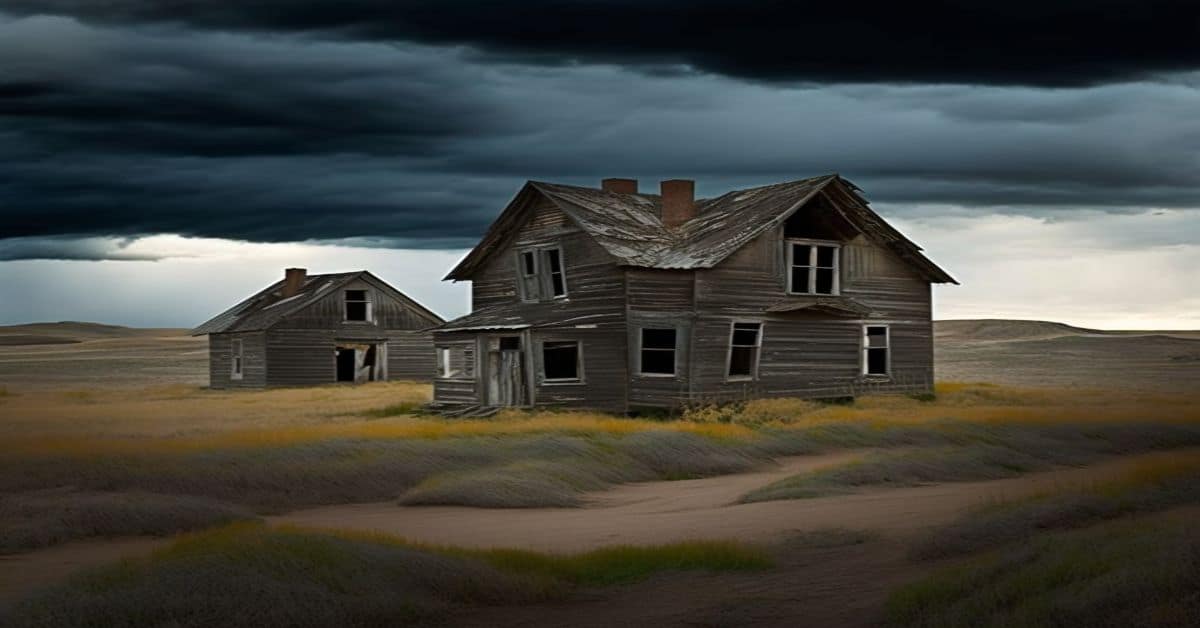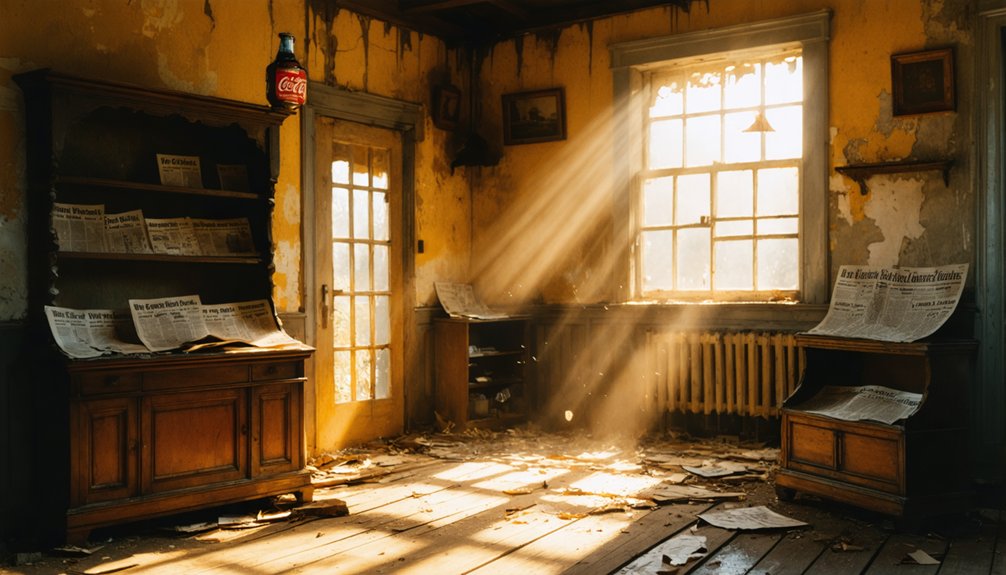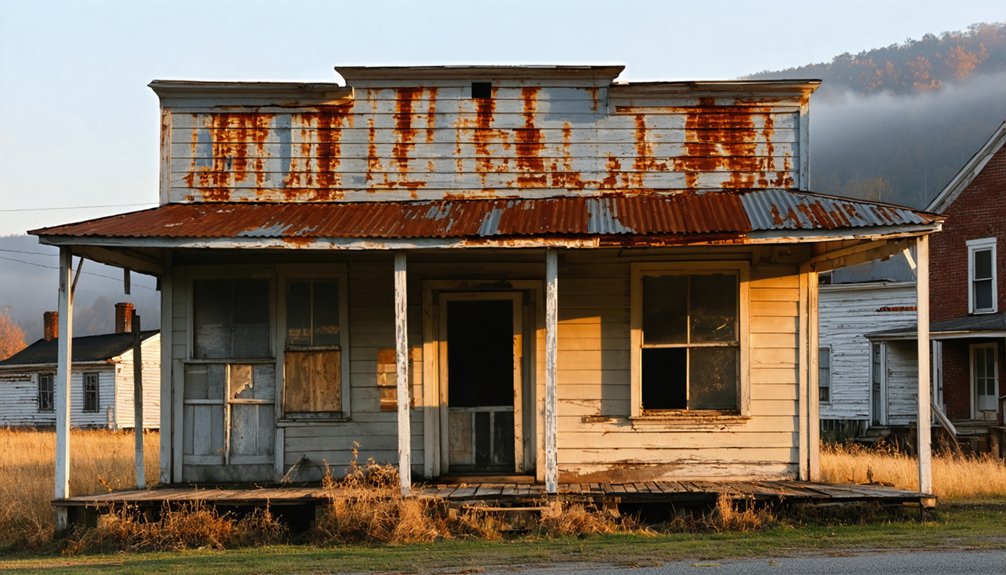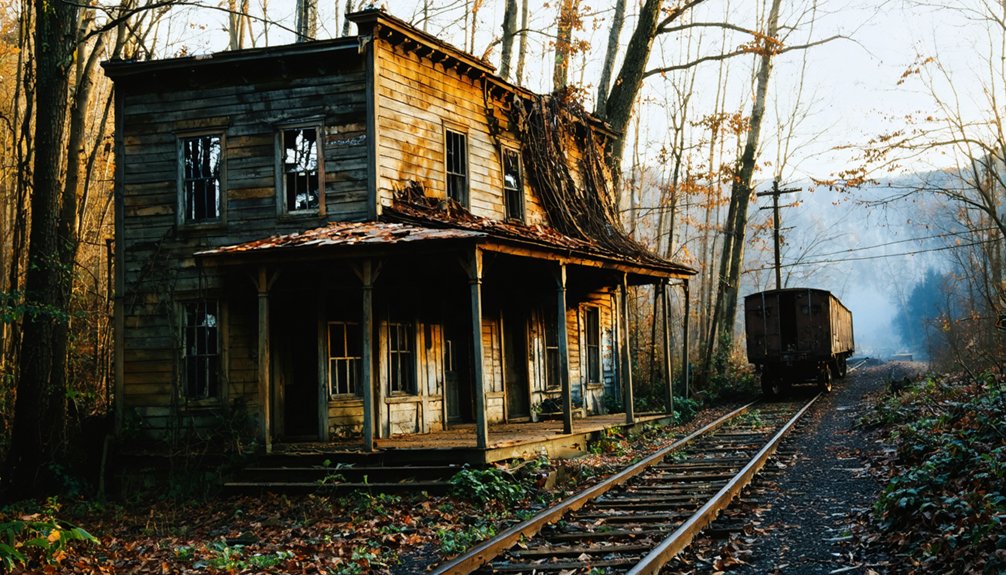Kentucky was officially declared the 15th state to join the United States on June 1, 1792. In the 2010 census, Kentucky was determined to have an approximate population of 4.3 million. This state is a leading coal producer, and the US military bases are Fort Knox and Fort Campbell. Due to its significant historical period, several towns have been depopulated or migrated.
There are approximately 41 ghost towns in Kentucky. Nine of these ghost towns exist in Harlan County. They have completely disappeared now as the coal industry bottomed out. Bear Wallow, Dog Trot, Hell for Certain, Oz, Pee Vee, Slick Lizard, Tin Can Alley, Upper Squabble, and Uz.
Kentucky is known for its coal mines, horse racing, and bourbon. Due to its economic activities, its ghost towns have fascinating histories.
Barthell, Kentucky
Barthell was the first of 18 mining camps to start operations in the Big South Fork of Kentucky. During the late 1880s and early 1900s, coal deposits were discovered and explored for production. In 1901, the Stearns Coal and Lumber Company invested in the area’s mineral rights after being persuaded by the landowner L.E. Bryant and his associate John Toomey. By 1902, coal mining was in progress at Mine No.1, and Barthell had been established.
In 1903, the Kentucky and Tennessee Railroad completed a railway from Stearns to Barthell. The railway made transporting the mined coal easier and aided the town’s further success. By the end of 1906, Barthell began production in Mine No. 2.
The Stearns Coal and Lumber Company decided to purchase the land from Bryant in the mid-1920s. Barthell’s coal mines were the most productive in the area and continued to produce coal and offer steady employment throughout the Great Depression. As World War I began, coal was needed even more than before. Barthell mines worked overtime to meet the demand, and a second railway was established to increase freight loads.
In 1943, a fire near Mine No. 1 destroyed the mining tipple, a structure used to load and extract coal from the mines into railroad cars. Even with No. 1’s record-breaking success, the decision was made not to rebuild the tipple and close the mine. Mine No. 2 was still operational; however, with the closure of the first mine, coal from No. 2 was being sent to a tipple at the Blue Heron Mining complex.
The Stearns Coal and Lumber Company began dismantling the Barthell mining camp in 1952. By 1961, the area was abandoned. Twenty-three years later, in 1984, the Kroger family purchased the former mining camp to restore the community to its previous glory days.
Today, tours of the mining town are available, showcasing the original structures of the local store, doctors’ office, and school. For those interested, miners’ homes can even be rented by night for guests and tourists wanting to stay in the ghost town.
Creelsboro, Kentucky
Creelsboro was founded in the early 1800s. Although it had a population of 50, this town was considered one of the main places of commerce in the 1840s. It is located southwest of Jamestown, approximately 10 miles away.
Due to its proximity to the Cumberland River, Nashville, and Burnside steamboat, boaters conducted their exchanges in Greensboro. The town had a post office, a church, a school, a hospital, a hotel, and two banks.
Its decline began with the creation of highways connecting cities. The steamboats became outdated and impractical, vanishing the only economic activity that kept the town afloat. The town was declared a ghost town, although some small communities still inhabit it. These people dedicate themselves mainly to agriculture.
If you plan to visit Creelsboro, its most prominent attraction is a natural stone arch or bridge. Although no places to sleep in the town, you can find hotels nearby.
Paradise, Kentucky
The city was a ferry line for the Green River. It is known by other names, such as Stom’s Landing, but in 1852, a postal service was opened under Paradise.
The town was located 10.5 miles northwest of Greenville. In 1959, a coal mine was built where the city used to be. Tennessee Valley Authority cleared out the town in 1967 because of health concerns about the impact of a coal plant on the city’s residents.
At present, the only thing that remains of this town is a cemetery on top of a hill. The TVA bought the city and, after evacuating it, destroyed it to continue building coal plants.
Blandville, Kentucky
Blandville, located in Ballard County, was founded in 1842 and was home to the county’s first court until it burned down in 1882. The 2010 census had 90 inhabitants, and the only attraction to visit is the remains of the court.
Dry Fork, Kentucky
Dry Fork is located 7.1 miles from Fountain Rock. The town engaged in logging, agriculture, and mining. Women and children supported Dry Fork through agriculture, while men worked as loggers and miners.
The town boomed in the late 1800s. At its peak, it was home to more than 500 people, although it is currently unpopulated. Dry Fork is now an open reserve for hiking and field trips only.
Highland Park, Kentucky
Highland Park was a community created for the employees of the L&N Railroad Company. Founded in 1890, it had more than 320 families in just ten years. During the First World War, houses were built to train soldiers. The town became part of the city of Louisville in 1922, causing expenses to increase and several working families to migrate to other towns.
However, during World War II, the town flourished again, creating several manufacturing companies and increasing its population to approximately seven thousand people.
In 1947, Louisville moved its airport into the areas near Highland Park, and in 1988, they bought and demolished the homes for the airport expansion. There are no remains of the town, as Highland Park’s 100-year history was destroyed with the growth of Louisville.
Bells Mines, Kentucky
Bells Mines was a town of English and German farmers and miners founded in the early 1800s.
It is located 3.4 miles northwest of Sturgis. Coal mines created a booming economy for this town. However, in 1950, Alcoa, an industrial company, bought the city and migrated its inhabitants to Newburgh, Indiana, on the opposite side of the Ohio River.
Due to a long absence of inhabitants, wildlife has increased in the town. Therefore, Kentucky established Bells Mines as a historical and cultural site open to the public.
Golden Pond, Kentucky
Golden Pond is a town that first based its economy on the location’s natural resources, such as gold mining and agriculture. Over time, the city has had several drawbacks. 1898, a fire destroyed the town, but it was rebuilt immediately. 1936 a second fire destroyed the city, but it was rebuilt again.
During the Prohibition Era from 1920 to 1933, Golden Pond was known for moonshining, which refers to making illegal drinks not authorized by the American government. The whiskeys that they made were sold in Chicago, St. Louis, and Detroit.
In 1964, the first recreational area, Land Between the Lakes, was opened in Golden Pond. Then, the federal government took over the space for public use, and different recreational regions were created. The villagers burned the houses before the deal could be finalized, and in 1969, they moved to Calloway County, where they founded a new town called Little Golden Pond.
Currently, all that remains of Golden Pond are some brick scraps. However, the former inhabitants wanted to preserve the town’s history. They founded a planetarium with the past, tributes, and memories to keep the city alive.
Conclusion
Kentucky might not have many ghost towns, but the ones it does have are full of stories waiting to be shared. Most of the ghost towns are former mining and farming villages. While some cities were completely deserted and destroyed, others offer a glimpse into the past with city remains tours, overnight stays, and historical points of interest.



